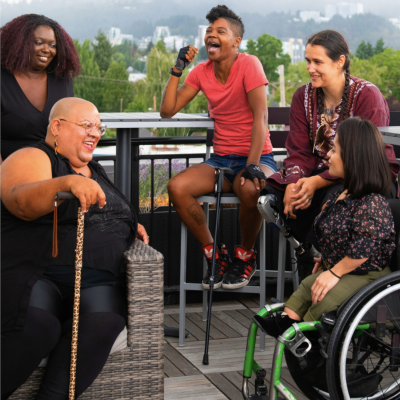The United Nations estimates that nearly 1 billion people, or 15% of the world’s population, have at least one type of disability. Not only is this percentage unrepresented in the media, but the few representations shown are often rife with negative and inaccurate stereotypes. The way in which our media represents the public populace can heavily influence the way different groups are treated by institutions such as education and medicine, but also within social circles. Accurate representation highlights inclusivity and dispels stereotypes - two areas that positivity impacts everyone!
So, what are some negative stereotypes that need dismantled? One is that individuals with disabilities are often portrayed as villains. These can include both physical and mental disabilities. Some examples are the Joker in the Batman series, Kevin Wendell Crumb in the movie Split, Freddy Kruger in Nightmare on Elm Street, and more. When people’s only exposure to individuals with disabilities showcases this, how do you think they will react when connecting with a disabled person? Furthermore, when disabled representation is limited to villain characters, this can negatively impact the mental wellbeing of disabled individuals.
Another stereotype in need of dispelling is that of naivety and incapabilities. Just like any human being, we all have a range of abilities. Members of disability communities are no different. Assuming that someone is disabled and therefore incapable leads to unfair and inaccurate treatment within society. Other negative stereotypes include ‘throwing off’ a disability as a conclusion or plot point, and “inspiration porn.”
Like any individual, human beings are complex, multi-faceted characters. For too long, members of disability communities have been boxed into unfair and inaccurate stereotypes. It is past time such individuals are portrayed with the complexity of able-bodied characters. While there have been recent strides in disability representation, there is a long way to go. Remember the son in Breaking Bad whose disability is connected wot Walter White’s actions but whose identity is not his disability?
Centering the voices and experience of those with disabilities, Project Humanities is partnership hosting a film screening of Move Me, an Indie Lens Pop Up Film sponsored by PBS on Thursday, November 3rd from 6-8 PM (MST) at the Westside Multigenerational Center in Tempe. Check out the description below!
“At 27, Kelsey Peterson dove into Lake Superior, off the shores of Wisconsin, and emerged paralyzed. Now, the former dancer struggles to redefine who she is while adapting to life with a disability. At the intersection of acceptance and hope, Kelsey unexpectedly finds herself facing an opportunity to dance again, showing her a new path toward acceptance, all the while grappling with a decision to participate in a cutting edge clinical trial that could bring her much-desired change – forcing her to evaluate the possibilities of her recovery, body, and spirit.”
If interested in learning more, take a look at this article written by Project Humanities Founding Director Dr. Neal Lester.
Sources: https://www.un.org/development/desa/disabilities/resources/disability-and-the-media.html
